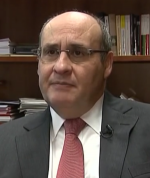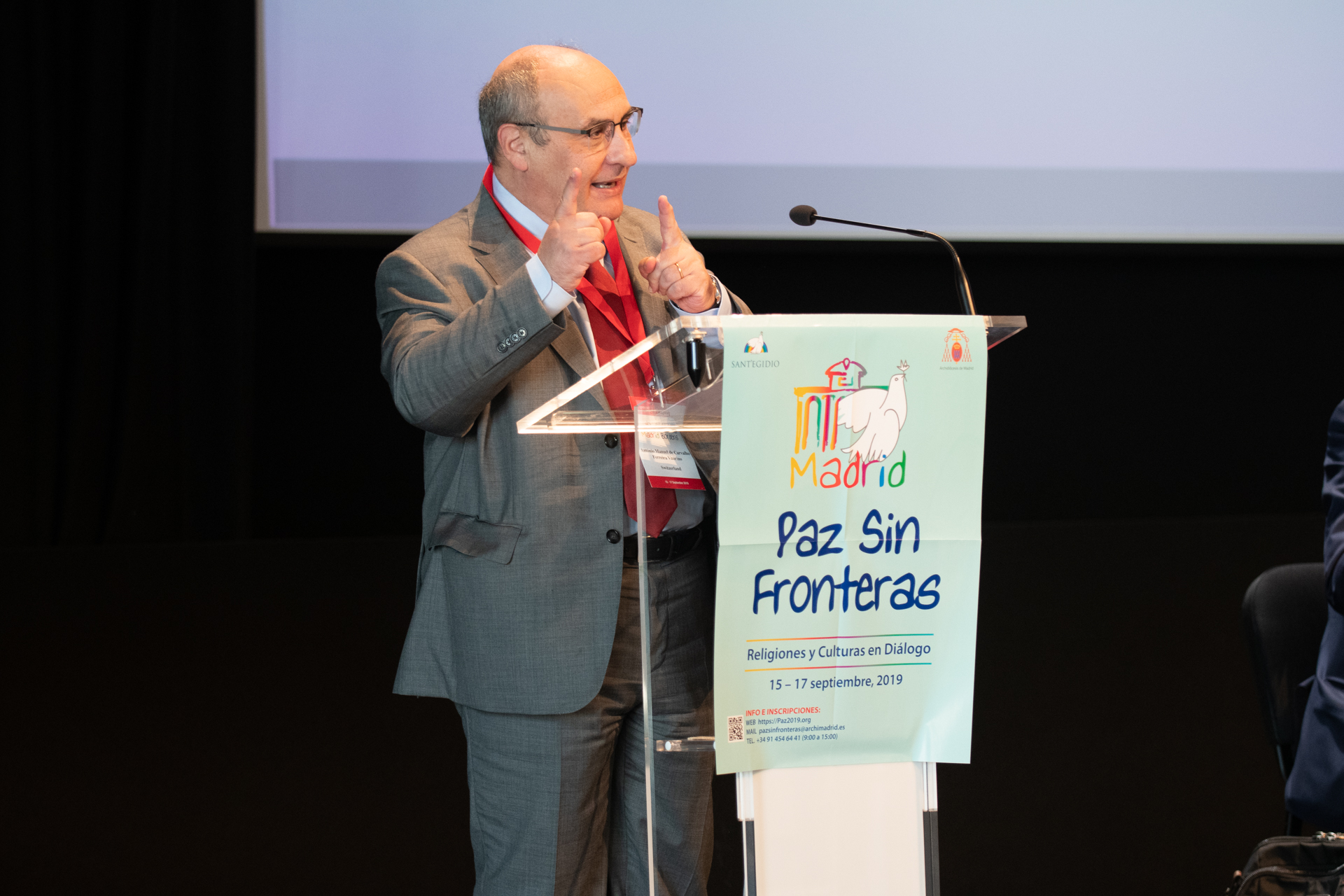
António Vitorino
Directeur Général de l'Organisation Internationale pour les Migrations (OIM)biographie
• This morning I would like to reflect on some of the biggest shifts in dynamic that have occurred in recent years, and some of the future trends that we at IOM think that policy-makers, communities and citizens will have to take into account over the next generation.
• We live in an era of contradictions. More people are on the move than ever before, not only to start new lives or jobs, but also to travel on holiday or for business. The UN World Tourism Organisation estimates that international tourist arrivals reached over 1.4 billion in 2018; the stock of international migrants in the same year has been estimated at nearly 258 million.
• But we focus disproportionately on those who cross borders – temporary, or permanently – as migrants, while those who move within their own country – particularly those displaced by conflict or disaster – are overlooked. Estimates of internally displaced people are hard to pin down, but IOM alone offers support to nearly 23 million internally displaced persons worldwide, in Yemen, Libya, Iraq, Mozambique, Ukraine, the list can seem endless.
• In this century, the drivers that are pushing people to be on the move will become more complex and potentially overwhelming. The key factors influencing mobility and migration are constantly evolving, but global fundamentals – notably the economy, peace and security – will remain key determinants of how dynamics -- and attitudes -- will evolve. Conflict, both civil and transnational, will greatly affect displacement and broader migration patterns.
• But this will also be impacted by rapid environmental change, with deep and varied effects on the global population. While some groups will be directly affected by climate-induced disasters – such as flooding, droughts and extreme weather events – others will be affected by growing desertification, coastal erosion and infrastructural instability stemming from resource scarcity. This, when combined with continued inequality, ongoing fragility and demographic change, will lead to increased internal, regional and international mobility as individuals search for sustainable livelihoods for themselves and their families.
• To give you an example. Millions of people in West and Central Africa depend on Lake Chad; however, the lake’s volume has decreased by 90 per cent in area in the last 40 years due to increased drought, and increased irrigation withdrawals. The lake’s disappearance has not only affected the livelihoods of millions of people but is also a source of tension and communal conflict.
• Interconnected environmental changes such as droughts and floods, over-exploitation of resources and climate change are contributing factors to rural–urban and cyclical mobility within countries and across borders in the region. And yet in Europe, we too often remain focused on the path through the Lake Chad region that leads to a boat across the Mediterranean – rather than the challenging conditions that affect lives within the region.
• For IOM, climate change means a more complex response is needed in ever more challenging environments, both politically and practically. In Bangladesh, for example, IOM is working with other agencies to support Rohingya refugees living in camps whilst a monsoon season rages around them. Just last week, 15 landslides, 25 rainstorms and five floods caused the temporary displacement of nearly 15,000 people, both in the host community and the camps. Every few months, extreme weather events create deep upheaval for a population already at its most vulnerable.
• In the face of increased vulnerability for those on the move, we frequently witness policy paralysis, not least in addressing the most pressing drivers such as climate change.
• And while migration tops the political agenda across the globe – not least here in Europe – it has become harder to talk about in an objective, thoughtful way. It has also become more difficult to find reasonable ways to implement elements of migration policy that were once considered core and uncontroversial: legal migration (legal pathways), family reunification, access to citizenship, social inclusion. Even resettlement, which had rarely been questioned as a positive outcome for the refugees most in need around the world. There is an increasing tendency to give such policies a punitive edge, or limit them unduly.
• We can often be too myopic in our concerns. While we – rightly – remain deeply concerned about those who embark on increasingly dangerous journeys across the Central Mediterranean, we too often forget that over 85,000 predominantly Ethiopian nationals have crossed the Red Sea to Yemen so far in 2019. Not only is the crossing fraught with danger, but the destination is itself perilous. The rights and needs of all those who move should be considered to be equally deserving of a response, regardless of geography.
• Much of the discourse across Europe remains captured by a fear of demographic growth in neighbouring regions, and an exponential increase in unauthorized migration to Europe. The reality is far more complicated. For example, Africa hosts more than a quarter of the world’s refugee population – and this does not include those who find themselves displaced within the borders of their own country. The top five refugee-producing countries in Africa – South Sudan, Somalia, Sudan, the Democratic Republic of Congo, and the Central African Republic – barely register in the headcount of asylum-seeking nationalities in Europe. Long-distance travel is a distant luxury, and safety is a priority.
• And it obscures much of the potential that exists. In 2017 there were 19 million African nationals living in another African country, compared to around 8.75 million in Europe (and 17 million across the globe). Mobility within Africa has transformative potential, not least with the advent of AU’s Continental Free Trade Area accompanied by the development of free movement. (There is irony in the fact this is happening while Europe’s free movement area contracts.). Governments across the region are investing in migration policies that will facilitate safe and legal movement, not least legal identity, and giving citizens the opportunity to move to find work.
• In such a short time, I cannot hope to cover all the trends that we, at IOM, see on the horizon. But I do hope I have managed to offer some different perspectives, and fuel for leadership on this issue. At IOM, we are cautious but hopeful. With strong support, not just from forward-looking governments, but from all those who have an interest and means to invest in a positive future for migrants, we can ensure that people who choose to move, can do so in a safe, orderly and regular manner.
